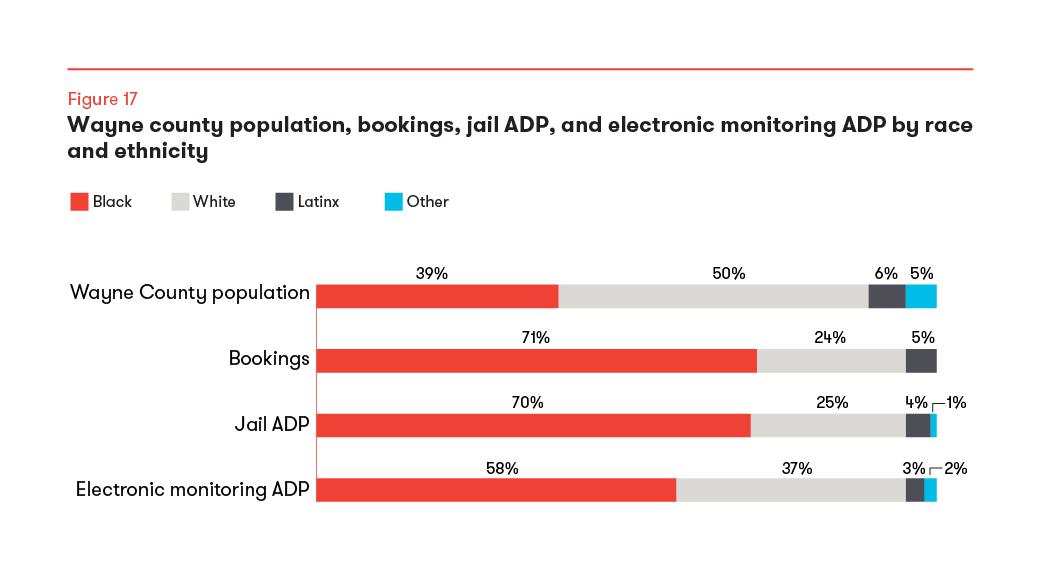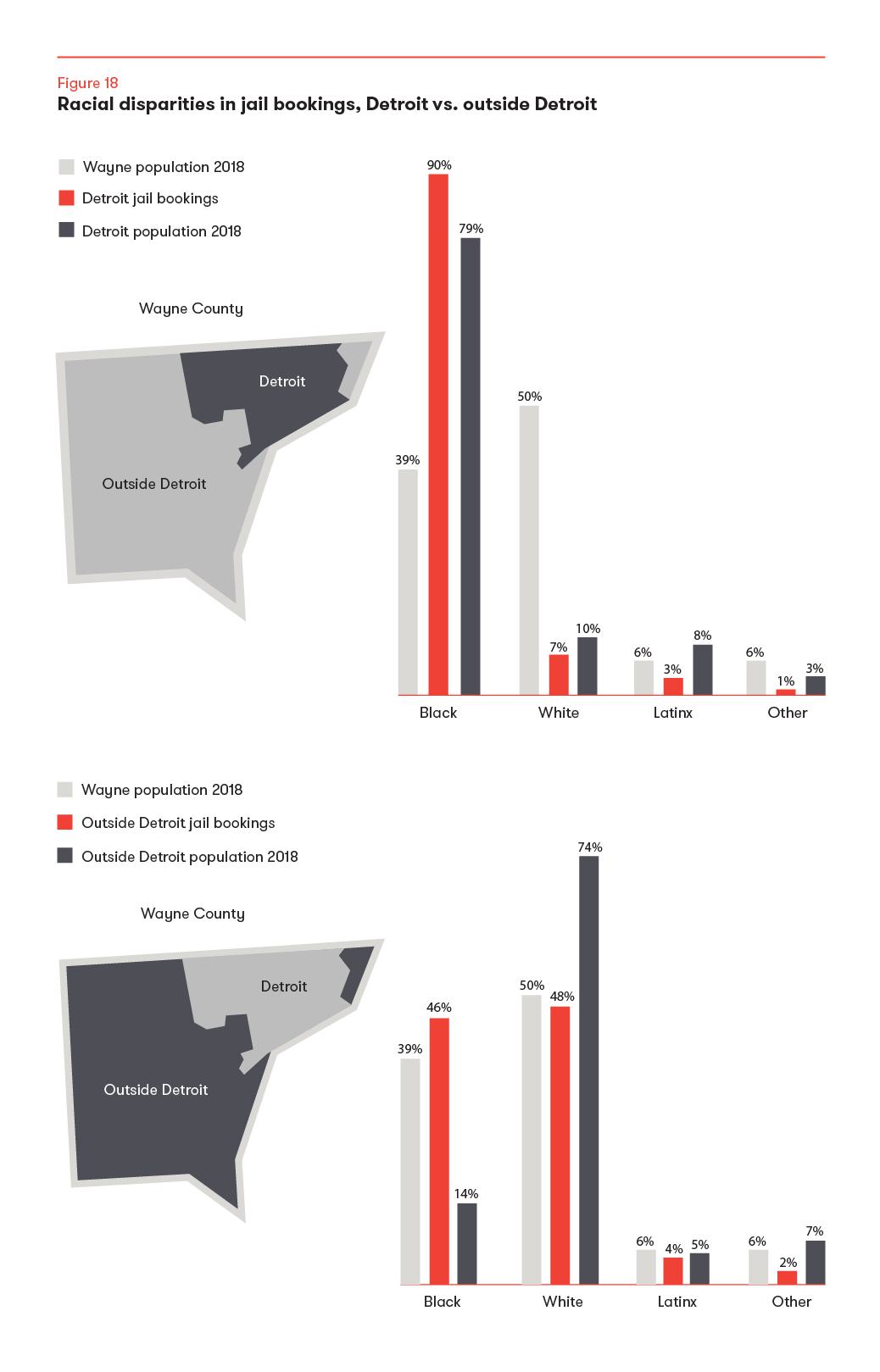Black people are disproportionately represented in the Wayne County Jail and among those on electronic monitoring, although the population of people on electronic monitoring contains more white people than does the jail population. Racial disparities also appear to be driven more by admissions into the jail than length of stay, and disparities in jail admissions are worse outside of Detroit. Although the racial disparity stemming from Detroit is less significant, high rates of jail incarceration in Detroit, a majority Black city, reflect the complicated history of race in Detroit and inequities that go beyond the justice system. Therefore, addressing the level of jail incarceration in Detroit is a critical part of facing that history and addressing longstanding harm to Black communities in the county.
Key Findings
- On any given day, Black people are 3.5 times more likely than white people to be in the jail and two times more likely to be under electronic monitoring.

- Racial disparities in jail bookings are much more significant for those coming from district courts outside of Detroit. While Black people are more than 1.7 times more likely to be booked into the jail from the 36th District Court, which serves Detroit, they are 5.2 times more likely to be booked into the jail from the other courts in the county.

Recommendation
Establish a framework for action on racial equity.
Reducing racial disparities in the Wayne County justice system and working toward the larger goal of achieving greater racial equity will not be accomplished by making a few quick policy changes; the numbers reflect longstanding problems that are individual, institutional, and structural—and not unique to Wayne County. Wayne County leadership has the responsibility and capacity to address racial disparities in the justice system by establishing a framework for action on racial equity that tracks progress toward measurable goals. A suggested framework, outlined below, should incorporate government as well as community members and be grounded in quantitative, qualitative, and historical data about the origins and current experience of disparities in the system.
Key components of a framework for change include:
- Commitment and accountability of leadership. Leaders in justice system agencies should acknowledge the problem of racial disparities in the justice system publicly and commit to addressing it.
- An inclusive structure for collaborative action, with varied expertise. The county should establish a task force, interagency working group, or special committee to lead an inclusive process that will identify key drivers of disparities and plan for change.
- A plan for collecting and analyzing data. Good data is vital to address racial disparities in the justice system. The collaborative entity can look at quantitative data about significant decision points (such as arrest, bail, charging, and diversion) and qualitative data gathered from those who have direct experience of the impact of those decisions.
- Data-driven implementation. Data analysis can highlight specific decisions, policies, or practices that are priorities for reform and should continue in order to support implementation of changes.
- Achievement of measurable change. Goals can be short- or long-term, but the purpose of having them is to reach them—and then to keep moving forward.
